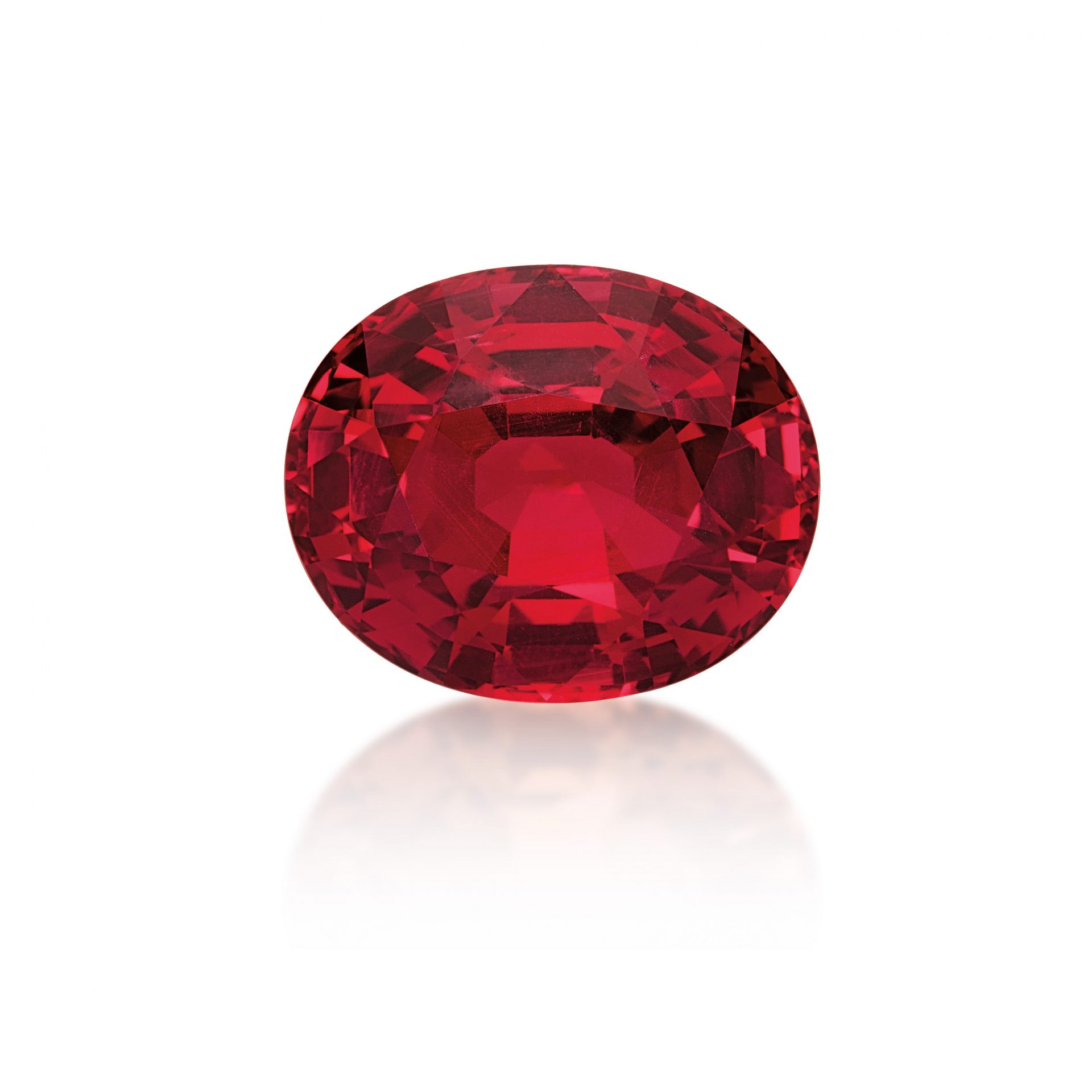GRS-type “Pigeon Blood” Ruby
Heritage
This color term has far-reaching pedigrees and was traditionally used to describe the finest colors found in Burmese (Myanmar) ruby. GRS first introduced the color term GRS-type “pigeon blood” onto the market in 1996, creating a market standard for the trade, auction houses, and end-users.
Definition
GRS-type "pigeon blood" Type 1 describes rubies displaying colors ranging from medium-strong to strongly saturated vivid red hues ( high intensity and low tone) and exhibiting medium to strong fluorescence when exposed to UV light (365nm).
In 2012 GRS introduced the "pigeon blood" Type 2 color term for rubies displaying the correct vivid red color but producing less than medium-strong fluorescence. Qualifying rubies receive an appendix to the GRS gemstone report which includes the following comment:
“This vivid red Mozambican ruby is reminiscent in color saturation of a GRS-type “pigeon blood” ruby (without strong fluorescence).”
Rubies qualifying for the GRS-type "pigeon blood" designation may be found in various global sites like Burma (Myanmar), Mozambique or Madagascar etc.
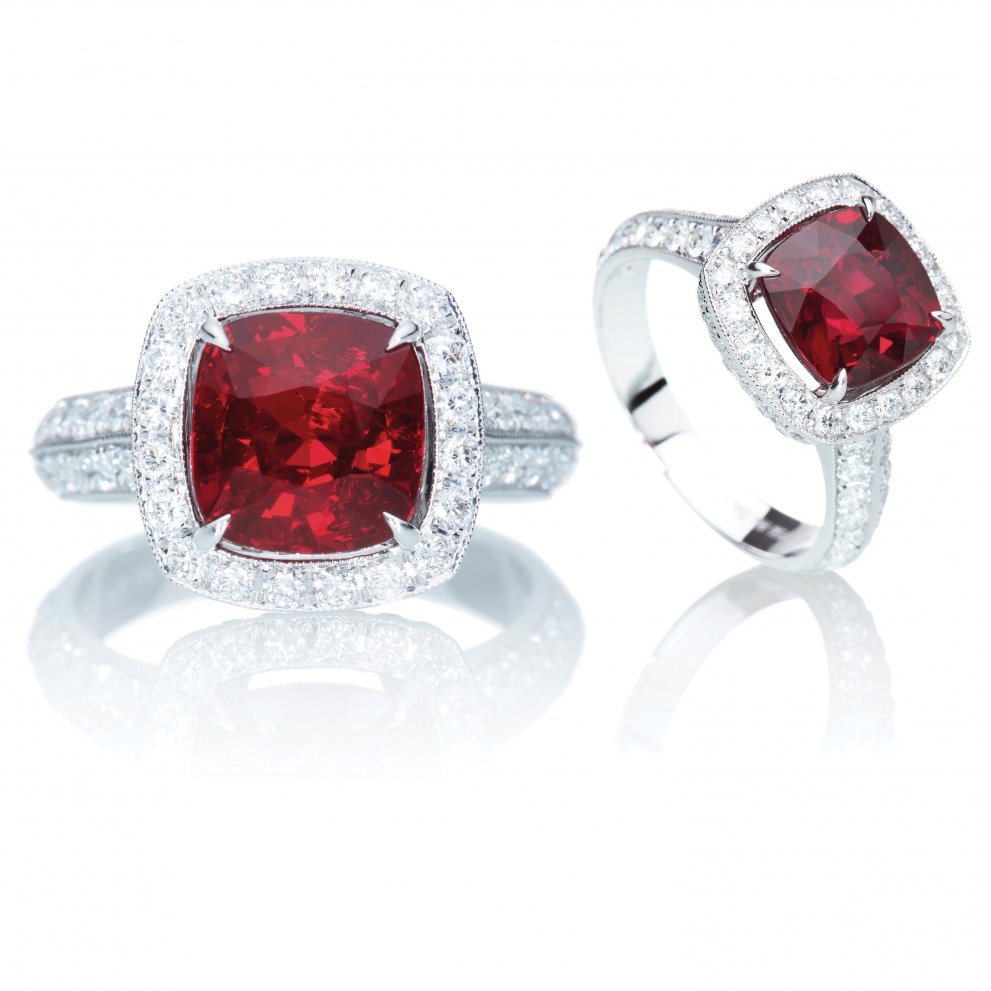
Publications
The first auction house publication citing the use of the GRS term "pigeon blood" was Sotheby’s Important Jewels London, June 1998 (Lot 140, GRS number GRL9804015). Today the term GRS-type "pigeon blood" has become an industry-wide standard that has been adapted by other laboratories as well.
Auction References:
- A ring featuring a 20.03 ct Mozambican ruby at an international auction house in Hong Kong, 2013 accompanied by a GRS-type “pigeon blood” report.
- A necklace featuring 48 unheated Burmese pigeon blood rubies from Mogok and Mong Hsu at Christie's sold for US$13M in 2015 accompanied by a GRS-type "pigeon blood" report.
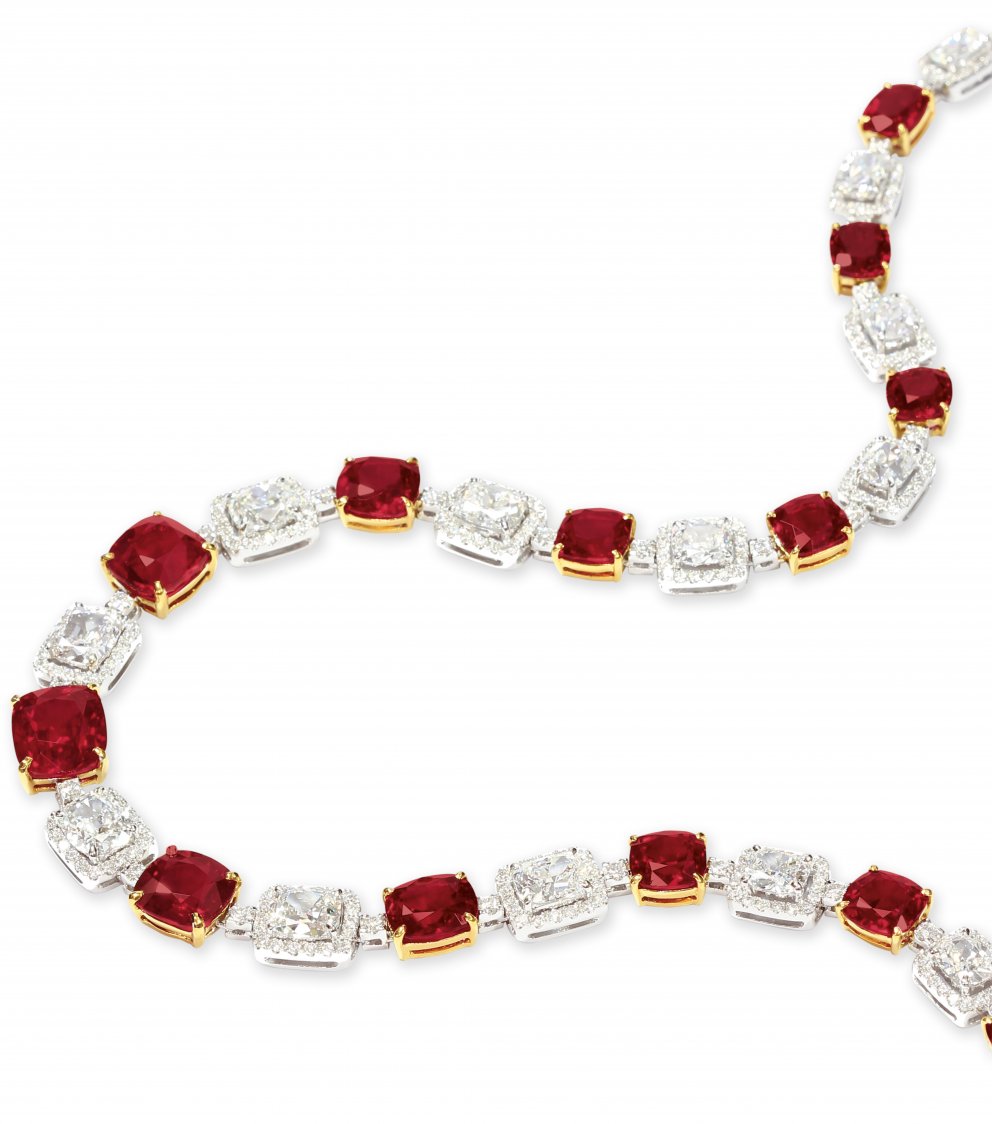
Research
Ruby qualifying for GRS-type “pigeon blood” must contain a relatively high chromium (Cr) content of approx. 0.3 to 0.5 wt-% (or higher) and none or very low to medium iron (Fe); while the ratio of Cr/ Fe is greater than 1 (individual face-up color and fluorescence-corrections are also applied).
Type 1 - GRS-type "pigeon blood" applies to all marble deposit ruby. They generally exhibit a medium-strong to strong fluorescence when exposed to UV light (365nm) due to their high chromium (Cr) concentration and low iron content (Fe). Some non-marble deposit ruby with subsequently higher iron concentrations may qualify as Type 1 - GRS-type “pigeon blood”, providing they exhibit a medium-strong to strong fluorescence.
Type 2 - GRS-type “pigeon blood” applies to all other rubies that properly face up in appearance but display a medium or less fluorescence when exposed to UV light (365nm).
Visit www.pigeonblood.com for more information.
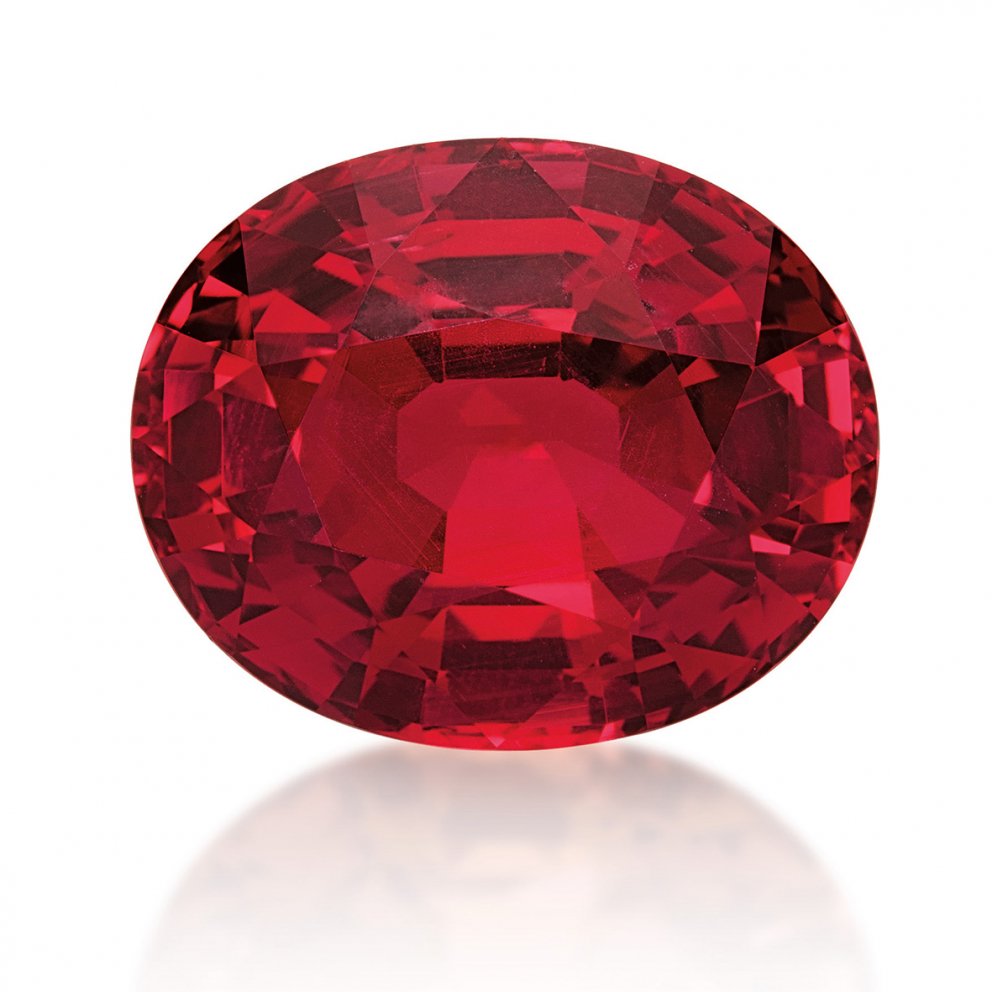
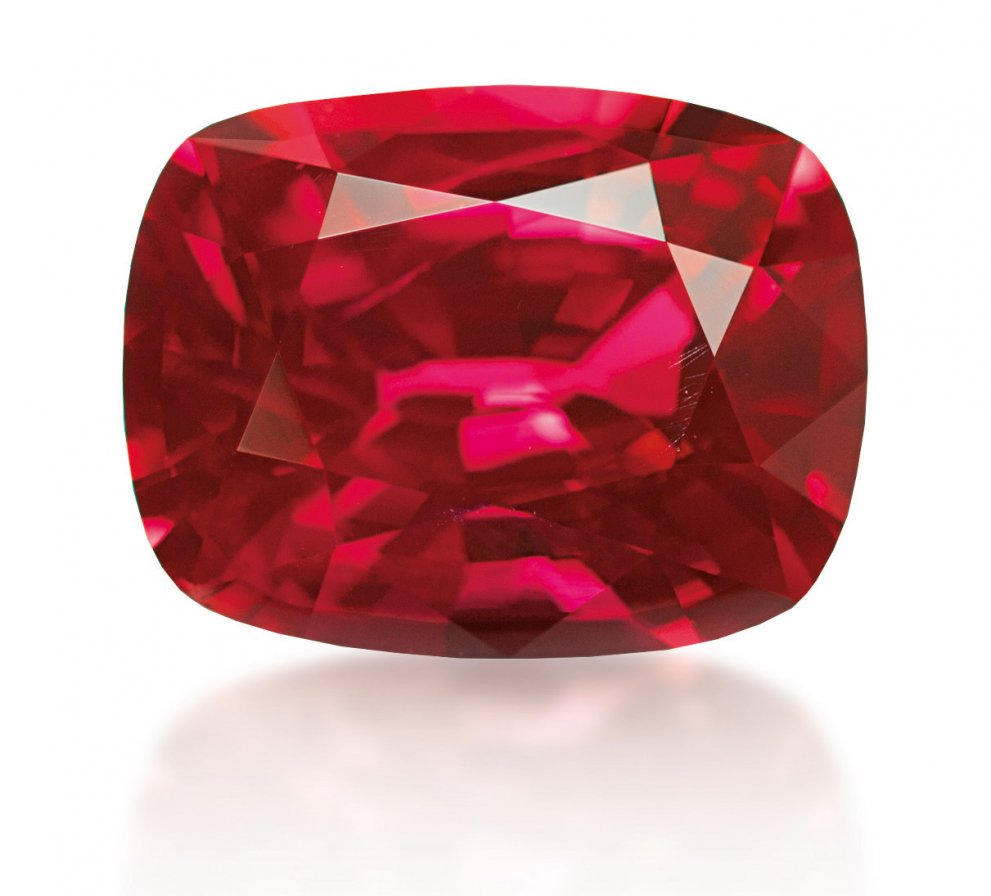
The GRS-type “pigeon blood” label is not granted for:
- Rubies with dominant quality issues such as apparent color zoning, windowing or disturbing inclusions
- Beryllium-treated rubies / H(Be)
- Lead-glass-filled rubies
- Rubies with more than minor residues from heating H(c) and H(d)
- Synthetic rubies
Sources from which GRS- type “pigeon blood” rubies may originate from:
- Afghanistan
- Burma (Myanmar)
- Madagascar
- Mozambique
- Tajikistan
- Tanzania
- Vietnam and others
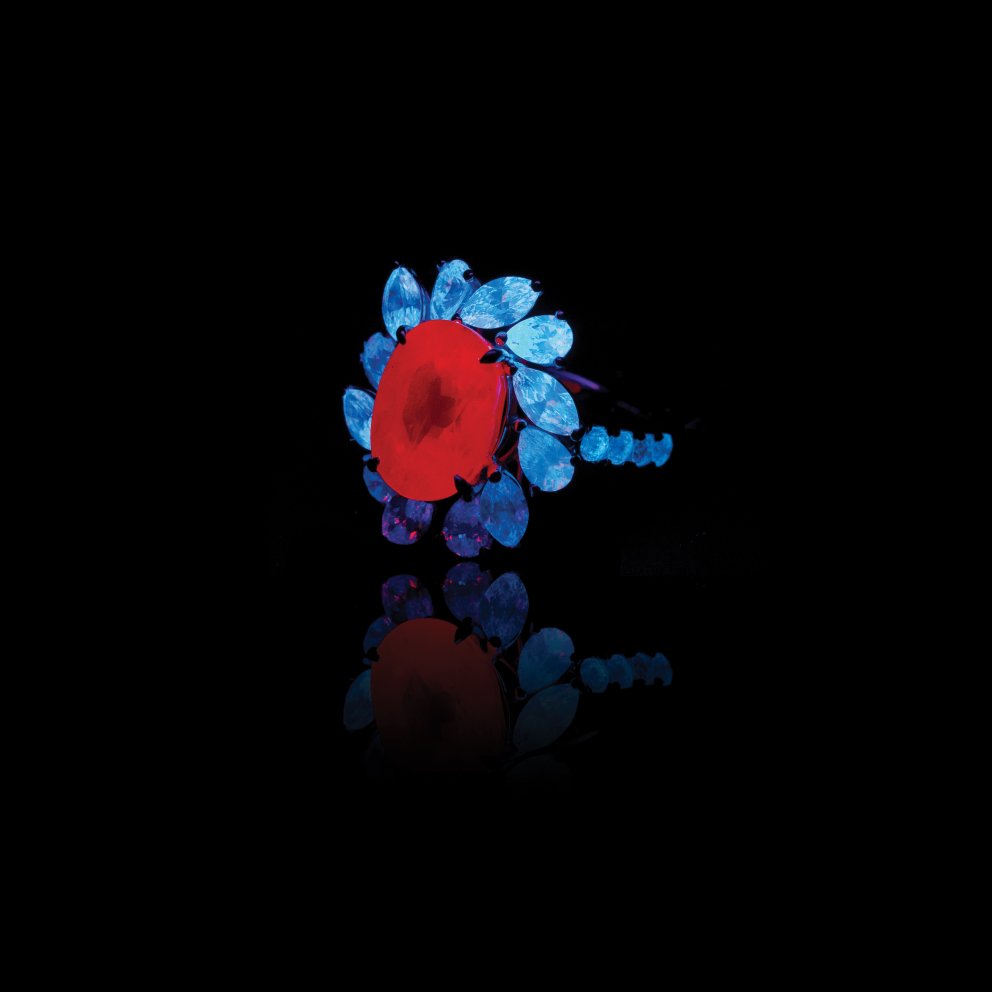
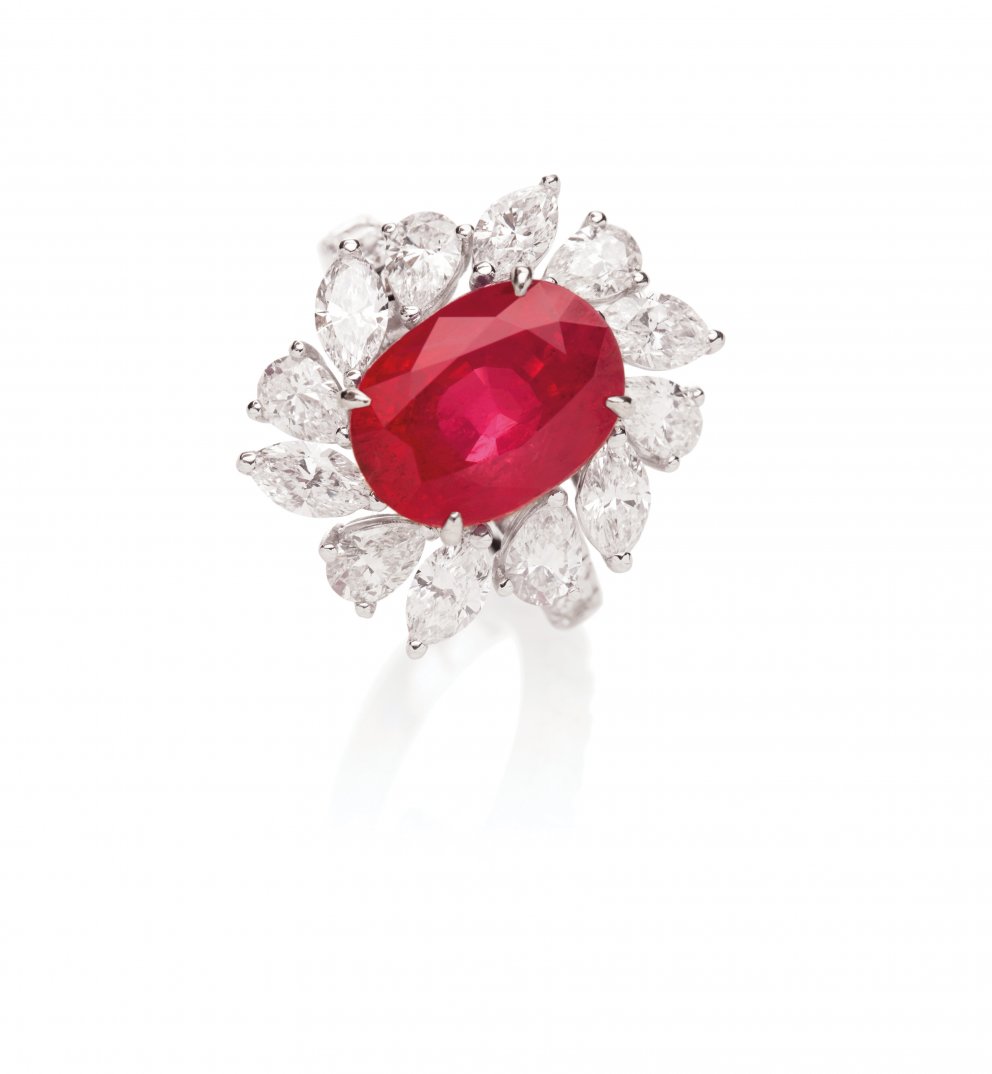
© 2024, GRS GemResearch Swisslab AG

